Freshwater vs Cultured Pearls: Key Differences Explained
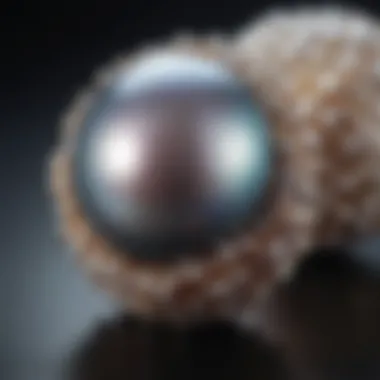
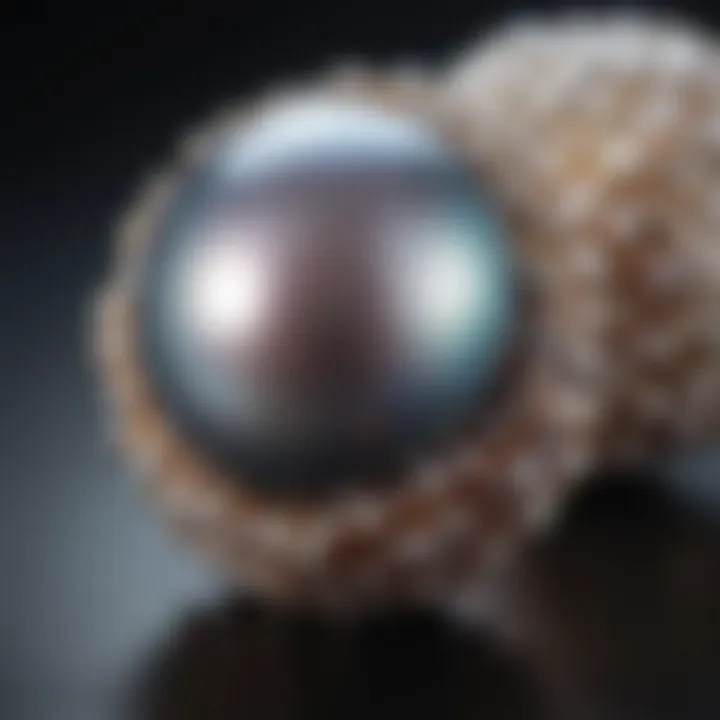
Intro
Pearls have captured the fascination of humanity for centuries. As members of the gemstone family, they symbolize beauty and elegance. Among pearls, freshwater and cultured pearls stand out, each with their distinctive characteristics and charm. This article delves into the differences that set these pearls apart—more than just their appearance, we will navigate through their formation, cultural significance, and care practices. This comprehensive guide aims at enriching the understanding of gemstone enthusiasts, collectors, and jewelry designers alike.
Group of gemstones presents a captivating blend of natural wonder and skilled craftsmanship. Here, we’ll shine a spotlight on the specifics of freshwater and cultured pearls, diving into the richer narratives of their origins and journey into the world of adornment.
Gemstone Overview
Definition of Gemstones
Gemstones are naturally occurring materials, mainly minerals, that possess aesthetic value. They are often cut and polished to enhance their luster and appeal. This broad category includes various forms like precious stones—think diamonds and rubies—and semiprecious ones, comprising your quartz and amethyst.
When it comes to pearls, they exclusively represent organic gemstones. Created within living mollusks, they are unlike traditional gemstones mined from the earth.
Classification of Gemstones
Gemstones can be classified based on a variety of criteria:
- Origin:
- Hardness:
- Color:
- Value:
- Natural
- Synthetic
- Organic
- Mohs scale rankings define durability.
- Pearls rank lower, as they are relatively softer and require careful handling.
- Ranges from classic whites and creams to vibrant blues, blacks, and golds.
- Influenced by rarity, demand, and quality, where cultured pearls generally hold a lower market value than some freshwater varieties.
Understanding these classifications helps in discerning the type of pearls one encounters, which is crucial for collectors and jewelry designers.
Historical Significance
Origins of Gemstone Use
The allure of pearls goes back to ancient times. Historical records suggest that pearls were utilized by the earliest civilizations, not just for decoration, but also as currency and symbols of power. The ancient Chinese were among the first to cultivate freshwater pearls, while in ancient India, pearls were a sign of wealth and nobility.
Cultural Insights: Pearls in Ancient Civilizations
Across different cultures, pearls have held varied meanings. In ancient Rome, for example, they were a testament to one's status and were often found in the adornments of the elite. The Persian Gulf was renowned for its natural pearls, prized for their unique luster and size. Meanwhile, Japan’s innovation in pearl farming blossomed in the early 20th century, laying the groundwork for modern cultured pearls.
"In cultures around the globe, pearls have been revered not just for their physical beauty but for the stories they tell—of nature's artistry, wealth, and history."
With these insights, we begin to appreciate the significance that both freshwater and cultured pearls carry. That understanding allows us to value them beyond their mere aesthetic appeal, leading us to a deeper conversation about their formation processes, characteristics, and the care they require as gemstones in modern jewelry.
Prolusion to Pearls
Pearls have captivated humans for centuries, often regarded as symbols of elegance and sophistication. Their lustrous beauty enchants jewelry enthusiasts and collectors, while their unique history enriches the cultural tapestry of various societies. Understanding pearls—particularly the differences between freshwater and cultured varieties—provides valuable insights for anyone looking to deep-dive into the world of gemology.
Freshwater and cultured pearls each have their own peculiarities and charm. While many may think all pearls are created equal, delving into their origins, characteristics, and uses, unveils a world of distinctions. This knowledge enhances appreciation and aids in making informed purchasing decisions. Moreover, awareness of these nuances can assist jewelry designers and collectors in curating pieces that resonate with specific themes or emotions.
In this article, we’ll explore the formation processes of pearls, examine their physical traits, and analyze their roles in jewelry. By honing in on the essential differences, readers will walk away with a comprehensive understanding of what sets freshwater apart from cultured pearls, ensuring each choice reflects their personal aesthetic and values.
The Formation of Pearls
The process of pearl formation is nothing short of fascinating. It begins when an irritant, such as a grain of sand or a parasite, enters the shell of an oyster or mussel. In response to this unwelcome invader, the mollusk secretes layers of a substance called nacre, which is composed of aragonite and conchiolin. Over time, these layers build up, encapsulating the irritant and creating a pearl.
The Distinctions in Formation
- Freshwater Pearls are formed primarily in rivers and lakes, accommodating various species of mussels. Interestingly, these mussels can produce multiple pearls in one growth cycle, leading to a diverse range of sizes and shapes.
- Cultured Pearls, on the other hand, involve human intervention. Farmers deliberately implant a bead or piece of mantle tissue into the mollusk to stimulate nacre production. This process is generally conducted in saltwater environments, particularly for varieties like the Akoya or South Sea pearls.
Key Factors Impacting Quality
- The irritant's nature: Different types of irritants can lead to variations in pearl formation.
- Environment: Water quality, temperature, and food availability all play crucial roles in the health of the mollusks, affecting how well they produce nacre.
Overview of Freshwater and Cultured Pearls
In establishing an understanding of freshwater and cultured pearls, it’s essential to recognize the key differences and similarities that dictate their charm and market value. Freshwater pearls, for instance, are often more affordable compared to cultured pearls, while remaining exceedingly versatile in design and finish. The lower costs are chiefly due to the greater quantity produced and the ease of accessing freshwater environments.
Conversely, cultured pearls are often seen as premium choices due to the labor-intensive farming practices and meticulous care involved in their creation. Their more uniform shapes and larger sizes create appeal, particularly in fine jewelry settings. They are frequently celebrated for their superior luster and the gradation of colors available.
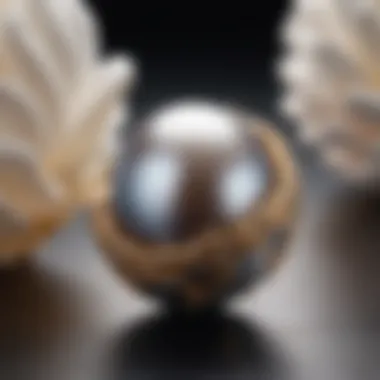
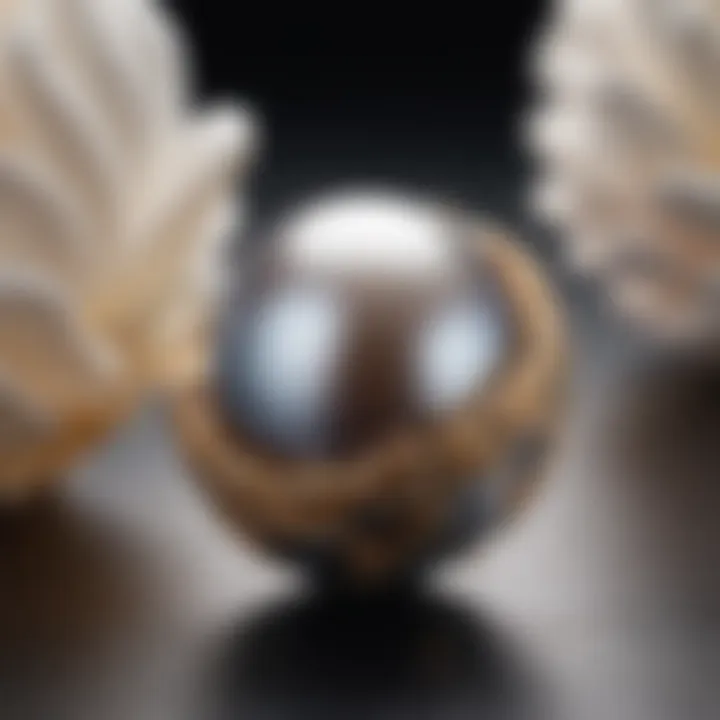
"Whether you opt for the unique irregularities of freshwater pearls or the polished perfection of cultured pearls, both types tell a story. It’s up to the wearer to decide which narrative resonates more."
Ultimately, distinguishing between the two can greatly enhance one's jewelry collection, allowing for a more tailored selection based on personal preference and occasion. By delving deeper into the biological and physical properties of each variety in the forthcoming sections, readers will gain clarity on what makes each pearl type uniquely desirable.
Understanding Freshwater Pearls
In the grand tapestry of gemology, freshwater pearls hold a unique and undeniably important position. They are often regarded as a more accessible alternative to their cultured or saltwater brethren, yet the nuances of their upbringing and characteristics are worth delving into. Understanding freshwater pearls isn’t just about knowing that they come from freshwater mussels; it’s about appreciating the complex interplay of biological, environmental, and consumer factors that shape their existence.
Freshwater pearls emerge from various species of freshwater mollusks, primarily found in lakes and rivers. This lends them a certain charm and diverse range that captivates gem lovers and jewelry designers alike. The different types of freshwater pearls – from the quirky baroque forms to the more traditional round shapes – offer a spectrum of choices for those looking to express their individuality through jewelry.
Given their increasing popularity, grasping the essence of freshwater pearls can inform purchasing decisions, helping consumers determine what aligns with their personal style and values. Moreover, as sustainability takes a front seat in our consumer choices today, understanding how these pearls are cultivated and harvested can lend insight into the environmental considerations behind purchasing decisions.
Biological Background
When we dive into the biological aspect of freshwater pearls, we unearth a captivating story. Unlike saltwater pearls, which form inside oysters, freshwater pearls grow within mussels. These mighty creatures are generally larger than oysters and can produce multiple pearls at once. This multi-pearl production ability greatly enhances the overall availability of freshwater pearls in the market.
Freshwater mussels filter feed on microscopic material in their habitat, and as irritants infiltrate their shells, they respond by secreting layers of nacre to envelop the irritants. Over time, this process results in the formation of pearls. The biological journey of a freshwater pearl reflects its unique characteristics, which means the environmental conditions of its growth significantly influence its final quality.
Types of Freshwater Pearls
Exploring the different types of freshwater pearls sheds light on the extravagant diversity this category offers. Each type has its own defining traits and charm, making them suitable for various aspects of jewelry making.
Button Pearls
Button pearls are flat and, as their name suggests, resemble buttons. They have gained popularity due to their unique shape that pairs well with that modern, chic look. These pearls are often used in jewelry that requires a contemporary flair, such as minimalist designs or vibrant statement pieces. Their flat surface increases the options for styling, making them versatile for various pieces.
While they may lack the classic roundness that some seek, their distinct profile provides a refreshing twist on traditional pearl jewelry. The button shape can also lend itself beautifully to earrings and pendants that demand a more understated yet stylish approach.
Baroque Pearls
Baroque pearls are known for their irregular shapes, a quality that sets them apart from conventional pearls. Their unpredictability is what makes them truly special. Each baroque pearl is a piece of art, showcasing nature’s hand in its unique form. This enchanting variety fits remarkably well in artistic or vintage jewelry styles, allowing for creativity in design.
The charm of baroque pearls lies in their asymmetry, providing an interesting contrast to traditional jewelry that often favors uniform shapes. They often serve as conversation starters, appealing to those who admire the charm of imperfections.
Round Pearls
Round pearls, possibly the most sought-after type, boast their classic, traditional looks. Their symmetry and uniform surface make them a staple in symmetrical design jewelry. Their timeless appearance means they can effortlessly transition from casual to formal settings. What’s particularly noteworthy about freshwater round pearls is their variety in size and luster.
These pearls frequently serve as the foundation for classic pieces, such as necklaces and single-strand bracelets. While they may vary in quality and price, their enduring appeal remains unmatched in the realm of elegance and sophistication.
Physical Properties
Examining the physical properties of freshwater pearls unlocks insights into their charm. The luster, size, and color these pearls exhibit play essential roles in defining their allure and market value.
Luster and Surface Quality
The luster of a pearl refers to its individual sheen and reflective quality. Freshwater pearls, particularly those that are high-quality, can possess a very attractive surface quality. This surface can range from smooth to textured, providing different visual experiences. The luster is influenced by the thickness of the nacre, and pearls with a thicker nacre generally have a brighter appearance.
Moreover, the surface quality can show minor blemishes or irregularities, a testament to their natural formation. While these blemishes might deter some buyers, many appreciate them as part of the pearl’s history, embracing the uniqueness found in each piece.
Size and Shape Variations
The size of freshwater pearls can differ vastly; they can range anywhere from tiny seed pearls to substantial statement pieces. Consumers relish this variability, as it allows for a diverse selection suited to every taste. The unique sizes also dovetail with their shapes, as freshwater pearls can be round, drop-shaped, or even baroque.
This variance means that freshwater pearls cater well to both minimalist and elaborate jewelry styles, making them a compelling choice across different market segments. These unique size and shape combinations empower designers to create remarkable pieces that stand out.
Color Range
When it comes to color, freshwater pearls are particularly fascinating. They are available in a spectrum of shades, from classic white and cream to more adventurous colors like lavender and pink. The hue can infuse life into jewelry designs, offering something for all aesthetic choices.
Freshwater pearls can often exhibit overs tones that elevate their appearance, adding depth and richness to the overall look. The colors also cater to various skin tones, allowing consumers to opt for shades that complement their individual styles, further enriching their jewelry experience.
Examining Cultured Pearls
When we talk about pearls in the jewelry industry today, the distinction between freshwatwer and cultured pearls cannot be overstated. Cultured pearls carry with them a certain allure, not only because of their beauty but due to their intricate production processes and the artistry involved in creating them. This section digs into the heart of what makes cultured pearls special, examining their production processes, the various categories they fall under, and their defining characteristics that appeal to both collectors and casual buyers alike.
Cultured Pearl Production Process
Cultured pearls originate from a fascinating blend of nature and human intervention. Unlike natural pearls, which occur spontaneously in the wild, cultured pearls are cultivated using techniques that ensure a more predictable and controlled outcome. The process begins with the careful selection of an oyster or mollusk. A small piece of matter, oftentimes a bead made from shell, is introduced into the mollusk's body. The animal then secretes layers of nacre around this irritant, forming a pearl over time.
In many cases, this cultivation can take anywhere from six months to several years. The care during this period is paramount; farmers must monitor water temperature, salinity, and other environmental factors that could impact the growth. As a result, the market is flooded with pearls that balance both natural growth and cultivated refinement, making them an attractive choice for buyers.


Categories of Cultured Pearls
Tahitian Pearls
Tahitian pearls are known for their striking dark colors—often a deep black, silver, or peacock green—that set them apart in the pearl market. Sourced primarily from the black-lipped oyster, these pearls reflect a tropical ocean's iridescence. Their key characteristic is their exotic color palette, making them a fantastic pick in both contemporary and traditional jewelry settings. One benefit of choosing Tahitian pearls is their uniqueness; each pearl has its distinctive appearance, which appeals to those looking for something different. Nonetheless, because of their rarity and cultivation methods, they can command a higher price.
South Sea Pearls
When one thinks of luxury in the pearl market, South Sea pearls usually come to mind. Cultivated primarily in the warm waters of Australia, Indonesia, and the Philippines, these pearls can achieve sizes larger than their freshwater counterparts. Their creamy white and golden hues are highly sought after for high-end jewelry designs. The main advantage of South Sea pearls is their size and luster, offering a striking visual impact. However, their premium pricing can be a downside for budget-conscious buyers.
Akoya Pearls
Akoya pearls have an established reputation for their classic round shape, and their characteristic luster is broadly acknowledged among gem enthusiasts. This type of pearl is cultivated mainly in Japan and is often used for traditional stringed pearl necklaces. Its roundness and high luster make it a popular choice for those seeking elegance. Additionally, decisions surrounding Akoya pearls may arise from their affordability when compared to other cultured types, although the quality can vary, making thorough research important before purchasing.
Characteristics of Cultured Pearls
Surface Quality
Surface quality plays a major role in determining the value of cultured pearls. An undesirable surface often detracts from the overall appeal and can significantly lower a pearl's market value. High-quality cultured pearls are typically smooth, with few blemishes or marks. Investors and jewelers alike tend to favor those with minimal surface irregularities, as these demonstrate better craftsmanship and care during cultivation.
Lustre Differences
Lustre is another vital factor when it comes to evaluating cultured pearls. This term describes the way light reflects off the pearl's surface, which can either enhance or diminish its beauty. Cultured pearls are renowned for their brilliant lustre, with factors such as the thickness of the nacre affecting the overall appearance. Pearls that exhibit a deep, mirror-like lustre are more appealing and sought after.
Size and Shape Consistency
When considering cultured pearls, size and shape consistency become invaluable elements. Cultured pearls are often uniformly round and consistent in size due to the cultivation process. This predictability is essential for jewelers, who often design pieces requiring uniform gems. While many buyers appreciate this consistency, some may find it lacks the character and individuality found in naturally occurring pearls, which can vary widely in size and shape.
In summary, cultured pearls represent an art form marked by human ingenuity and natural beauty. Their production processes bring forth a range of categories with unique features, each contributing to their standing in the jewelry world. Understanding these aspects thoroughly can help both enthusiasts and buyers make well-informed decisions.
Comparative Analysis of Freshwater and Cultured Pearls
In the world of pearls, distinguishing between freshwater and cultured pearls is not merely a matter of aesthetics; it’s a dive into their fundamental qualities and the values they each hold in the market. Understanding these differences empowers jewelry enthusiasts, collectors, and designers to make informed decisions that align with their tastes, preferences, and financial considerations.
The comparative analysis fosters deeper appreciation for both types of pearls. It highlights how the market dynamics influence pricing and accessibility. It also serves as a guide to recognize what is at stake in terms of durability and care, ensuring that owners maintain their precious pieces for generations. Equally important is the cultural significance, offering a backdrop to the uses and traditions that surround these gems.
Market Value and Pricing
When it comes to market value, freshwater pearls often stand out as budget-friendly options compared to cultured pearls. This can be attributed to the simpler production process of freshwater pearls, as they tend to be more abundant. Cultured pearls, on the other hand, command higher prices due to the meticulous techniques involved in their cultivation and the specific conditions required for their growth.
Several factors dictate pricing, including:
- Shape and size: Round cultured pearls are typically valued higher than off-round and baroque shapes.
- Luster: A high luster is often a sign of quality, notably in cultured pearls.
- Brand and origin: Pearls from renowned regions or brands may carry a premium.
Durability and Care
Pearls are delicate treasures that require careful handling and maintenance to retain their beauty over time. Both freshwater and cultured pearls have their own needs, which we'll explore in the following segments.
Cleaning and Maintenance
Regular cleaning is essential in maintaining pearl luster and appearance. While freshwater pearls are reasonably robust, they still require gentle care. Using a soft, damp cloth to wipe them after each wear prevents buildup of dirt and oils, preserving their shine.
A key characteristic of pearl care is to avoid harsh chemicals like ammonia, as they can mar the surface. This specific approach to cleaning is beneficial for all types of pearls, ensuring they stay in top condition. The unique feature of this practice is its simplicity, combining ease with effective maintenance. The downside is the need for commitment; regular attention to these cleaning routines is crucial for lasting elegance.
Storage Practices
Storing pearls correctly is as crucial as cleaning. Freshwater and cultured pearls should be kept in soft pouches or lined boxes to avoid scratches. This highlights the importance of using non-abrasive materials during storage. Humidity control also plays a role; excessive dryness can cause pearls to crack, while too much moisture may breed mold.
The distinctive aspect of proper storage involves ensuring that pearls are not stored alongside other jewelry pieces, which may scratch their surface. This careful storage technique has the advantage of keeping pearls safe, but it requires extra effort to develop a dedicated space.
Cultural and Historical Context
The cultural significance of pearls stretches back centuries, intertwined with symbolism and prestige across various regions. Understanding their historical context enhances appreciation for both freshwater and cultured pearls.
Freshwater Pearls in Tradition
Freshwater pearls have graced royal families and adorned traditional attires around the world, symbolizing purity and wealth. Historically, they were often deemed more accessible than their saltwater counterparts, playing a role in local art and attire. This characteristic made them popular among various cultures, enhancing their appeal.
The unique feature of freshwater pearls is their variety in shapes and colors, reflecting local customs and tastes. Although they are sometimes seen as less prestigious than cultured pearls, they offer a rich history that resonates with wearers who value tradition over pure luxury.
Cultured Pearls in Modern Jewelry
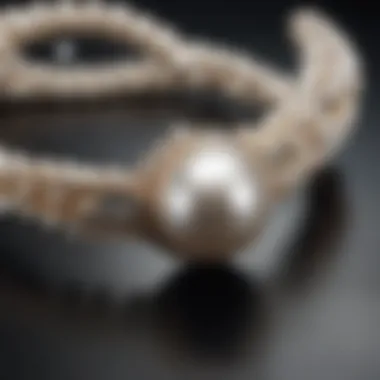
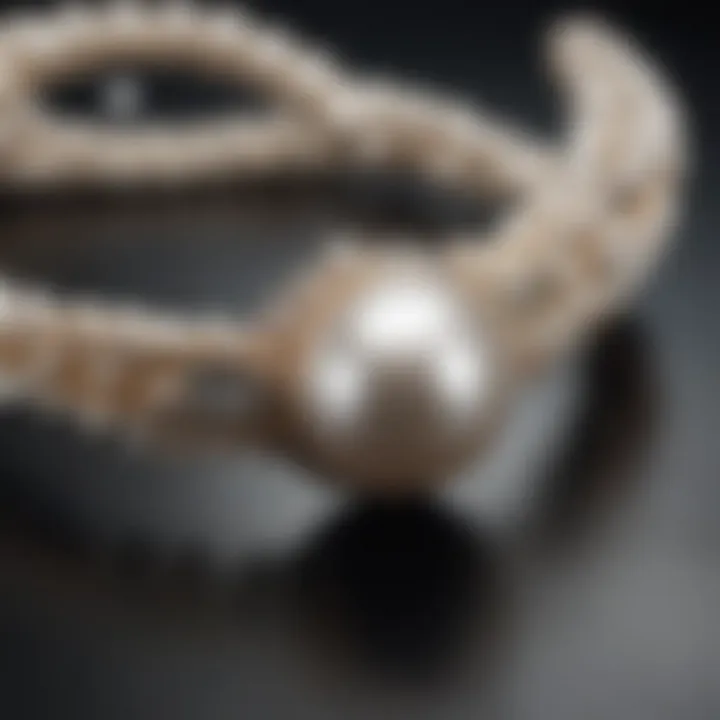
In contrast, cultured pearls have carved their niche in the contemporary jewelry landscape. Introduced in the early 20th century, these pearls emerged as an innovative solution to meet growing demand. They have become synonymous with elegance, often featured in high-end fashion and specialty collections.
Cultured pearls, with their consistent quality and availability in a range of colors and sizes, allow designers to create modern masterpieces. However, their commercialization can sometimes lead to a perception of being overly commercialized, which deters those who prefer a more artisanal approach to jewelry. Nevertheless, their unique feature lies in the craftsmanship involved, making them a beloved choice in both traditional and modern settings.
Choosing Between Freshwater and Cultured Pearls
Choosing between freshwater and cultured pearls can be daunting, especially with the vast selection available in the market. The significance of this decision often lies in personal taste and the intended purpose of the pearls. Factors such as use cases, investment considerations, and the environmental impact can weigh heavily on one’s choices. For instance, a buyer looking for everyday wear might prioritize durability and care, while a collector may focus on rarity and investment potential. Understanding these elements helps in making a more informed decision, thereby enhancing the overall experience of owning pearls.
Personal Preferences and Use Cases
When considering pearls, individual preference takes center stage. Each type of pearl can speak to different styles and occasions. For instance, if one favors a more stylish, contemporary look, freshwater pearls might be the way to go. They often come in a wider array of colors and shapes, which allows for more diversity in design. On the other hand, if you're seeking a classic, timeless piece, cultured pearls, especially the famed Akoya variety, could be a better match due to their more consistent round shape and luster.
Some potential use cases include:
- Everyday Jewelry: Freshwater pearls typically possess a resilience that makes them suited for daily wear.
- Formal Occasions: Cultured pearls can add elegance and class to an outfit, making them a popular choice for special events.
- Fashion Statements: Those looking to stand out may appreciate the unique shapes characteristic of baroque freshwater pearls.
Most importantly, one should always consider what suits their style best, as personal enjoyment of jewelry is ultimately key to any purchase.
Investment Considerations
Investing in pearls is not merely about purchasing a piece of jewelry; it’s about understanding the inherent value and potential appreciation over time. While both freshwater and cultured pearls have their merits, the market landscapes can differ substantially. Cultured pearls, particularly South Sea and Tahitian varieties, can command high prices due to their scarcity and the processes involved in their cultivation.
When one weighs the investment potential, consider the following points:
- Quality: Higher quality pearls, whether freshwater or cultured, tend to attract better prices. Luster, size, and surface quality play significant roles here.
- Market Trends: Keeping an eye on trends in pearl popularity can provide insight into future valuation. Certain types can become fashion staples, increasing their worth.
- Rarity: Limited editions or unique pearls can serve as fantastic investments. Cultured pearls with certificates of authenticity can sometimes reap higher rewards.
Thus, selecting the right type based on market insights can facilitate more judicious investments in these beautiful gems.
Environmental Impact and Sustainability
In a world increasingly focused on sustainability, the environmental implications of pearl farming cannot be ignored. Both freshwater and cultured pearls come from practices that have varying effects on ecosystems. Freshwater pearls are generally seen as more environmentally friendly since they can be produced in natural lakes and rivers with less intensive farming methods.
Some aspects to consider might include:
- Water Use: Cultured pearls, especially from a marine setting, require careful management to ensure that ocean biodiversity is preserved. Overfishing and habitat disruption can be significant concerns.
- Waste Management: The farming of pearls, particularly in large scale operations for cultured varieties, can lead to waste issues if not managed properly.
- Sustainable Practices: Many pearl farms are now adopting more eco-friendly strategies. Understanding which farms prioritize sustainability can influence buying decisions.
Ultimately, the choice between freshwater and cultured pearls can reflect not only personal preference but also a conscientious approach towards the environment.
In the end, choosing between freshwater and cultured pearls encapsulates a blend of personal style, investment potential, and the impacts of one’s purchases on the world.
The Future of Freshwater and Cultured Pearls
The landscape of pearls, specifically freshwater and cultured varieties, is evolving rapidly. Understanding where this trend is headed is essential for anyone in the trade or interested in pearls, whether for jewelry-making or investment. This future perspective is crucial because it foreshadows prospective shifts in cultivation techniques, market demands, and the overall artistry of pearl jewelry. As environmental awareness rises and technology advances, both freshwater and cultured pearls face unique challenges and opportunities that could redefine their production and appreciation.
Trends in Pearl Cultivation
One of the most striking shifts in pearl cultivation is the increasing emphasis on sustainable practices. As consumers become more socially conscious about their purchases, the pressure is on pearl farms to adopt methods that minimize environmental impact. Aquaculture techniques are evolving, with farms implementing eco-friendly practices. This includes the use of biodegradable materials and optimizing water quality to enhance pearl growth without harming aquatic ecosystems.
Additionally, genetic advancements are making waves in the way pearls are cultivated. Breeding programs focusing on improving shell thickness, color saturation, and shape consistency are already underway. Farms are selecting mollusks that show desirable traits, leading to vibrant and lustrous outcomes. Such innovations could significantly alter the market appeal of freshwater and cultured pearls.
Innovation in Pearl Jewelry Design
The design horizons of pearl jewelry are also expanding. Jewelers are breaking away from traditional designs and venturing into minimalist and avant-garde territories. This trend is fueled by a younger demographic that seeks originality over convention. For instance, the integration of mixed materials—pairing pearls with metals like recycled gold or alternative gemstones—is becoming more common. This not only highlights the unique beauty of pearls but also appeals to eco-conscious buyers who value sustainability in their choices.
Furthermore, technology is playing a pivotal role in jewelry design. With the rise of 3D printing, artisans can create intricate patterns and forms that were previously unattainable. Such innovations allow for customizable jewelry, where clients can specify designs that suit their personal tastes. Imagine a pearl necklace designed uniquely for someone, tailored in shape and style to fit their character.
Creativity in craftsmanship is crucial for keeping both freshwater and cultured pearls relevant in a competitive market. The fusion of traditional techniques with modern technology is breathing new life into the jewelry industry, ensuring that pearl collections remain fresh and desirable.
"The future of pearls is not only about the shine but also about the story they tell and the sustainable choices behind them."
The trends unfolding in both cultivation and design are set to shape the future of freshwater and cultured pearls, ensuring they not only retain their allure but evolve to meet the expectations of a changing world.
Finale
In this exploration of freshwater and cultured pearls, we have dissected the unique characteristics that define each type. Understanding these nuances is paramount for anyone interested in pearls, whether for personal adornment, investment, or appreciation of the natural world.
Summary of Key Points
- Formation: Freshwater pearls emerge from freshwater mussels, while cultured pearls originate under human intervention in saltwater or freshwater environments.
- Varieties and Types: There’s a rich diversity in both freshwater and cultured pearls, but the types differ significantly. For instance, you may find baroque pearls in freshwater and high-luster Tahitian varieties in cultured pearls.
- Physical Properties: While freshwater pearls can be delightful in their unique shapes and colors, cultured pearls often offer a more uniform appearance, appealing to those seeking consistency.
- Market Considerations: The pricing dynamics reflect not just rarity but also the intricacies of their production, with cultured pearls often commanding higher prices due to their perceived sophistication.
- Cultural Significance: Finally, both types of pearls have woven themselves into the cultural fabric of societies worldwide, contributing to traditions that span generations.
Final Thoughts on Pearl Selection
Choosing between freshwater and cultured pearls often boils down to personal taste and intended use. For the collector, freshwaters may present an appealing option due to their unique shapes and colors, while jewelry designers looking for a polished finish might prefer cultivated varieties.
When selecting pearls, consider the following:
- Luster: The shine can significantly impact appeal—cultured pearls often exhibit higher luster due to careful cultivation.
- Size and Shape: If statement pieces are your game, large round cultured pearls can resonate more with jewelry aesthetics.
- Cultural Value: What story does the pearl tell? Freshwater pearls might evoke a sense of rustic charm, while cultured pearls can reflect modern sophistication.



